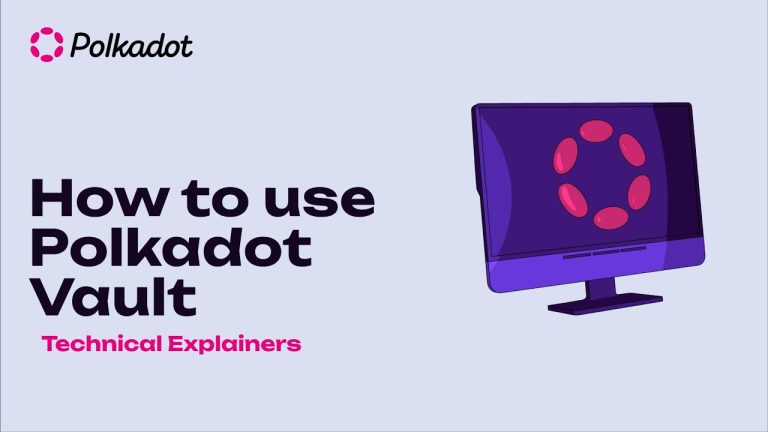As the Polkadot ecosystem grows, so does the demand for a seamless and enriching developer experience. In an effort to gather insights and identify any gaps within this experience, the Polkadot community has initiated a survey aimed at understanding what is missing for developers working within the ecosystem, shared in this polkadot forum topic created by Bader. This article delves into the survey’s findings, exploring the sentiments, thoughts, and suggestions from developers and stakeholders to enhance the overall Polkadot developer experience.
Understanding the Developer Experience
The developer experience (DX) is a crucial component of any technological ecosystem. It encompasses everything from onboarding new developers to the ease of use and comprehensiveness of documentation, the availability of tools and resources, and the overall satisfaction of developers as they build and deploy applications. For Polkadot, a multifaceted protocol that includes core infrastructure, smart contracts, and a wide array of decentralized applications (dApps), the DX is particularly complex and demands careful attention.
The Importance of Developer Documentation
One of the primary areas of concern highlighted in the survey is the quality and availability of developer documentation. Documentation is the cornerstone of the developer experience, providing the necessary guidance and knowledge for developers to build efficiently and effectively. Unfortunately, this is an area where Polkadot has been identified as having significant room for improvement.
While the Polkadot SDK is recognized as a powerful tool, the documentation surrounding it often falls short. Developers have expressed frustrations with the lack of clear, comprehensive, and up-to-date documentation. This gap not only hinders the onboarding of new developers but also slows down the productivity of experienced ones.
The term “documentation” itself is broad and can encompass various components, including:
- Introduction and Overview: Providing a clear explanation of the Polkadot ecosystem, its architecture, and its potential use cases.
- Installation Guides: Step-by-step instructions for setting up the development environment and dependencies.
- Beginner’s Guides: Quickstart guides that help new developers get up and running with minimal friction.
- Conceptual Documentation: Detailed explanations of key concepts, terminology, and design decisions within Polkadot.
- Tutorials: Practical, goal-oriented guides that walk developers through the process of building specific applications or features.
- Advanced Topics: In-depth resources for experienced developers, covering complex subjects like bridge integration and parachain development.
The survey revealed that while some of these components are present, they are often fragmented, outdated, or incomplete. This has led to a disjointed developer experience, where finding the right information can be time-consuming and frustrating.
The Need for Use-Case Driven Documentation
Another recurring theme in the survey is the demand for more use-case-driven documentation. Developers are not just looking for theoretical knowledge; they want to see real-world examples of how Polkadot can be used to solve practical problems.
This approach would involve creating documentation that focuses on specific use cases, such as:
- Building a Decentralized Marketplace: A step-by-step guide to creating a trustless marketplace on Polkadot.
- Implementing Supply Chain Solutions: Showcasing how Polkadot’s decentralized infrastructure can be used to improve transparency and efficiency in supply chain management.
- Developing Social Media Platforms: Exploring how Polkadot can power next-generation social media applications with enhanced privacy and security features.
By providing these examples, developers can better understand the potential of Polkadot and how it can be applied to various industry verticals. This not only enhances the developer experience but also drives innovation within the ecosystem by encouraging developers to think beyond the traditional DeFi applications.
The Role of the Polkadot SDK
The Polkadot SDK is a powerful and flexible tool that enables developers to build a wide range of applications within the Polkadot ecosystem. However, as the survey indicates, there is still much to be done to improve its accessibility and usability.
One of the challenges highlighted is the lack of comprehensive guides that cover the full-stack development process. Developers want to know how to build complete applications, from front-end to back-end, using the Polkadot SDK. This requires detailed documentation that not only explains the technical aspects of the SDK but also provides guidance on how to integrate it with other tools and technologies commonly used in Web3 development.
Moreover, the survey suggests that the Polkadot SDK could benefit from better tooling and support. This includes improving the developer tools available within the Polkadot SDK, as well as providing more robust support channels for developers who encounter issues. The goal should be to create an environment where developers can focus on building innovative applications without being bogged down by technical hurdles.
The Importance of Developer Support and Community Engagement
Developer support is another critical aspect of the DX that was highlighted in the survey. While Polkadot has a vibrant and active community, there are still gaps in the support available to developers, particularly those who are new to the ecosystem.
The survey respondents expressed a need for more accessible and responsive support channels. This includes not only traditional support methods, such as forums and help desks, but also more interactive and real-time options, such as chat support and live coding sessions.
In addition to support, the survey underscored the importance of community engagement. Developers want to feel connected to the Polkadot ecosystem and to other developers working within it. This can be achieved through regular community events, hackathons, and meetups, as well as through the creation of more collaborative spaces where developers can share ideas, ask questions, and work together on projects.
Bridging the Gap Between Web2 and Web3 Development
One of the broader challenges identified in the survey is the gap between traditional Web2 development and the new paradigms introduced by Web3 technologies like Polkadot. For many developers, transitioning from Web2 to Web3 can be a daunting process, requiring them to learn new concepts, tools, and workflows.
The survey suggests that more effort needs to be put into easing this transition. This could involve creating documentation and resources specifically tailored to Web2 developers, helping them understand the key differences and similarities between the two worlds. It could also involve providing more examples of how traditional Web2 applications can be reimagined and improved using Web3 technologies.
For instance, a guide on how to build a Web3 version of a popular Web2 application, such as an e-commerce platform or social media site, could be incredibly valuable. This would not only help Web2 developers get started with Polkadot but also demonstrate the unique advantages that Web3 can offer, such as enhanced security, decentralization, and user ownership.
Conclusion: The Path Forward for Polkadot Developer Experience
The Polkadot developer experience is at a crucial juncture. While the ecosystem offers powerful tools and infrastructure, there are still significant gaps that need to be addressed to ensure a seamless and productive experience for developers.
The survey has provided valuable insights into what developers are looking for, highlighting the need for better documentation, more use-case-driven resources, improved developer support, and a stronger focus on bridging the gap between Web2 and Web3 development.
As the Polkadot community continues to grow and evolve, it is essential to prioritize these areas and work towards creating an environment where developers can thrive. By doing so, Polkadot can not only attract more developers to its ecosystem but also empower them to build the next generation of decentralized applications that will drive the Web3 revolution forward.
Ultimately, the success of Polkadot depends on its ability to provide a developer experience that is not only functional but also inspiring. By listening to the feedback from the survey and taking meaningful action, Polkadot can ensure that it remains at the forefront of blockchain innovation and continues to be a leading platform for developers in the Web3 space.








